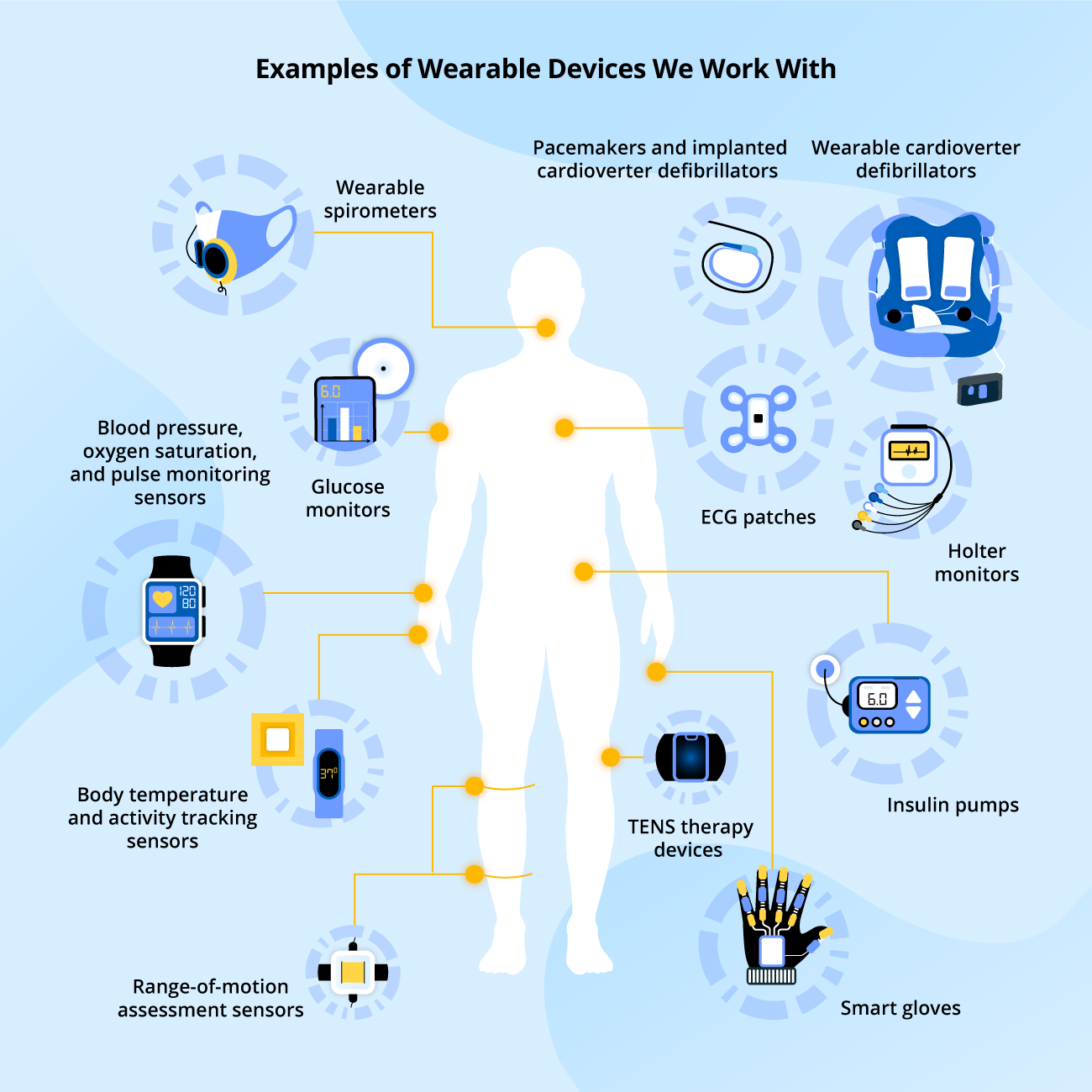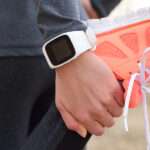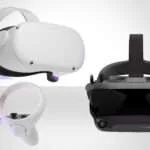Wearable health monitors track vital signs and physical activity in real-time. They provide crucial insights into an individual’s health.
Wearable health monitors have revolutionized personal healthcare. These devices, worn on the wrist or other parts of the body, continuously collect data on heart rate, sleep patterns, and physical activity. They empower users to take proactive steps towards better health.
Advanced models can even monitor blood oxygen levels and detect irregular heartbeats. Integration with smartphones allows seamless tracking and analysis of health data.
This technology is beneficial for fitness enthusiasts, patients with chronic conditions, and anyone interested in maintaining a healthy lifestyle. Wearable health monitors are becoming indispensable tools in modern healthcare, offering convenience and real-time health insights.

Credit: www.cleverdevsoftware.com
The Rise Of Wearable Health Monitors
Wearable health monitors are now a part of our daily lives. These devices have transformed from simple step counters to advanced health guardians. They help track heart rates, sleep patterns, and more. This revolution in health tech is changing how we understand our bodies.
From Fitness Trackers To Health Guardians
Fitness trackers were the first wearable health devices. They counted steps and calories burned. Today, they have evolved into comprehensive health guardians. Modern wearables can monitor heart rates, blood oxygen levels, and even ECGs. They offer real-time insights into our health status.
These devices now alert users to irregular heartbeats. They can even detect sleep apnea. This shift from fitness tracking to health monitoring is significant. It empowers users to take control of their health.
Key Players In The Market
Several companies lead the wearable health monitor market. Each offers unique features and benefits.
| Company | Key Features |
|---|---|
| Apple | ECG, Blood Oxygen, Fitness Tracking |
| Fitbit | Heart Rate Monitoring, Sleep Tracking, Fitness Metrics |
| Garmin | Advanced Fitness Metrics, GPS, Stress Tracking |
| Samsung | Heart Rate Monitoring, Sleep Analysis, Fitness Tracking |
Apple leads with its Apple Watch. It offers an ECG, blood oxygen level tracking, and fitness metrics.
Fitbit is known for heart rate monitoring and sleep tracking. It also offers comprehensive fitness metrics.
Garmin provides advanced fitness metrics and GPS. It also includes stress-tracking features.
Samsung offers heart rate monitoring and sleep analysis. It also provides detailed fitness tracking.
How Wearable Monitors Work
Wearable health monitors have revolutionized personal health tracking. These devices help individuals understand their body better. They use advanced technology to collect and analyze data. Let’s dive into how these fascinating gadgets work.
Sensors And Algorithms
Wearable health monitors use various sensors to gather data. These sensors can track heart rate, steps, and sleep patterns. Common sensors include accelerometers, gyroscopes, and optical sensors.
Accelerometers measure movement and speed. Gyroscopes detect orientation and rotation. Optical sensors monitor heart rate using light. These sensors work together to provide accurate data.
Once data is collected, algorithms analyze it. Algorithms interpret sensor data to offer insights. For instance, they can detect patterns in your heart rate. They also help in measuring steps taken and calories burned.
Accuracy And Reliability
Accuracy and reliability are crucial for wearable health monitors. Users depend on precise data for health decisions.
| Feature | Importance |
|---|---|
| Heart Rate Monitoring | Essential for cardiac health |
| Step Counting | Tracks physical activity |
| Sleep Tracking | Monitors sleep quality |
Manufacturers strive to improve the accuracy of these devices. High-quality components and advanced algorithms enhance reliability. Regular updates often improve their performance.
- Precise heart rate monitoring
- Accurate step counting
- Reliable sleep tracking
Remember, no device is 100% accurate. It’s essential to use these monitors as a guide. Always consult a healthcare professional for critical health decisions.
Types Of Wearable Health Monitors
Wearable health monitors have transformed personal health tracking. Different types cater to various needs and preferences. Let’s explore some popular options.
Smartwatches And Bands
Smartwatches and bands are the most common wearable health monitors. They track physical activity, heart rate, and sleep patterns. These devices are user-friendly and stylish.
Popular brands include Apple Watch, Fitbit, and Garmin. They offer various features to enhance health monitoring:
- Heart rate monitoring: Tracks heartbeats per minute.
- Step counting: Measures daily steps taken.
- Sleep tracking: Analyzes sleep duration and quality.
- Calorie counting: Estimates calories burned during activities.
Smartwatches also offer notifications, music control, and GPS tracking. They blend health tracking with convenience.
Clinical-grade Devices
Clinical-grade devices provide more accurate health data. They are used in medical settings and by health-conscious individuals.
These devices include:
| Device | Function |
|---|---|
| ECG Monitors | Tracks heart’s electrical activity |
| Blood Pressure Monitors | Measures blood pressure levels |
| Continuous Glucose Monitors | Monitors blood glucose levels |
Clinical-grade devices are often prescribed by doctors. They provide data for professional health assessments.

Credit: www.scnsoft.com
Monitoring Vital Signs
Wearable health monitors are transforming personal health management. They provide real-time data on vital signs. This helps people stay aware of their health status.
Heart Rate And Blood Pressure
Heart rate monitoring is crucial. Wearable devices track heartbeats per minute. This data helps detect irregular heartbeats. Blood pressure monitors are also vital. They measure the force of blood against artery walls. Keeping track of these metrics helps prevent heart disease.
| Metric | Normal Range |
|---|---|
| Heart Rate | 60-100 bpm |
| Blood Pressure | 120/80 mmHg |
Oxygen Levels And Sleep Patterns
Oxygen levels in the blood are vital. Wearable monitors use pulse oximetry. This method measures oxygen saturation. Normal levels are between 95-100%.
Sleep patterns are another key aspect. Wearable devices track sleep cycles. They record deep and light sleep stages. This helps improve sleep quality. Good sleep is essential for overall health.
- Oxygen Saturation: 95-100%
- Deep Sleep: 20-25% of total sleep
The Impact On Personal Health Management
Wearable health monitors are changing how people manage their health. These devices provide real-time data, helping individuals to stay informed about their health. This technology is key to personal health management.
Real-time Health Tracking
Wearable health monitors offer real-time health tracking. These devices collect data on heart rate, steps, and sleep patterns. Users can see their health metrics instantly.
Real-time tracking allows for immediate action. If the heart rate spikes, the user gets alerted. This helps in managing health actively and avoiding potential issues.
Preventive Care And Early Detection
Wearable health monitors assist in preventive care and early detection. They track vital signs continuously, alerting users to changes.
Early detection of irregularities can lead to timely medical consultations. This proactive approach helps in catching health problems early. Preventive care becomes simpler with these devices.
Consider this table of benefits:
| Benefit | Description |
|---|---|
| Real-time Alerts | Instant notifications of health changes |
| Continuous Monitoring | Track vital signs 24/7 |
| Early Detection | Identify issues before they become serious |
Challenges And Concerns
Wearable health monitors have become popular. They offer a wealth of benefits. Still, they come with challenges and concerns. Let’s dive into the most pressing issues.
Privacy And Data Security
Privacy is a major concern with wearable health monitors. These devices collect a lot of personal data. This includes heart rate, sleep patterns, and location. Protecting this data is crucial. Hackers can access this information. They can misuse it in many ways.
Companies must ensure strong data encryption. Users should feel safe about their data security.
Dependence And Accuracy Issues
People can become too dependent on these devices. They might trust the device more than their body signals. This dependence can be risky.
Accuracy is another concern. Not all wearable health monitors are accurate. Some devices might give false readings. This can lead to wrong health decisions. It’s important to choose reliable brands. Also, regular calibration can help maintain accuracy.
| Challenge | Impact |
|---|---|
| Privacy and Data Security | Risk of data breaches and misuse |
| Dependence | Over-reliance on devices for health insights |
| Accuracy Issues | Potential for incorrect health data |
- Privacy: Protecting personal health data from breaches.
- Dependence: Users might rely too much on the device.
- Accuracy: Ensuring the device gives correct information.
Future Trends In Wearable Health Technology
The world of wearable health monitors is evolving rapidly. Exciting new trends are emerging. These trends promise to revolutionize personal health monitoring. Let’s explore the future of wearable health technology.
AI Integration
Artificial Intelligence (AI) is transforming wearable health monitors. AI helps wearables to learn and adapt. This makes them smarter and more accurate. AI-powered wearables can predict health issues. They provide personalized health tips.
They analyze data from various sensors. This helps in understanding the user’s health better.
Here’s how AI is used in wearables:
- Predictive Analytics: Anticipate potential health problems.
- Personalized Recommendations: Tailored tips for better health.
- Data Analysis: Process large amounts of health data.
Non-invasive Monitoring Techniques
Non-invasive methods are the future of health monitoring. No needles or blood tests are needed. These techniques make health tracking easier. They are comfortable for users.
Some non-invasive techniques include:
| Technique | Function |
|---|---|
| Optical Sensors | Monitor heart rate and oxygen levels. |
| Electrodermal Activity Sensors | Measure stress and emotional responses. |
| Temperature Sensors | Track body temperature changes. |
These advancements offer great benefits. They make health tracking seamless and painless. Non-invasive techniques are key to the future of wearables.
Making The Right Choice
Choosing the right wearable health monitor can be a tough decision. With many options available, knowing what to look for is important. This guide will help you make an informed choice.
Selecting The Best Device
First, consider your health goals. Do you want to track your heart rate, steps, or sleep? Different devices offer various features.
Key Features to Consider:
- Heart Rate Monitoring
Tracks your heart’s performance during workouts and throughout the day. Advanced models even provide resting heart rate trends and irregular rhythm notifications. - Step Counting
Measures your daily activity by counting steps, helping you meet your fitness goals. Some devices also track distance and calories burned. - Sleep Analysis
Provides detailed insights into your sleep stages, including REM, deep sleep, and light sleep. Advanced devices may offer sleep coaching or even detect breathing irregularities. - Blood Oxygen Saturation (SpO2)
Monitors your oxygen levels, which can be crucial for athletes, hikers, or anyone concerned about respiratory health. - ECG Monitoring
Detects signs of atrial fibrillation and other heart irregularities. Often recommended for those with specific heart conditions. - Stress Tracking
Measures stress levels using heart rate variability and provides guided breathing exercises to help you relax.
Device Compatibility
Ensure the wearable works seamlessly with your smartphone or other devices. Most wearables support either iOS or Android, but some may offer limited functionality with certain platforms. Additionally, check for compatibility with third-party fitness apps like Strava, MyFitnessPal, or Google Fit.
Comparison of Top Wearable Devices (2025 Update)
| Feature | Apple Watch Series 9 | Fitbit Charge 6 | Garmin Venu 3 | Samsung Galaxy Watch 6 | Whoop 4.0 |
| Heart Rate | Yes | Yes | Yes | Yes | Yes |
| Step Counting | Yes | Yes | Yes | Yes | No |
| Sleep Analysis | Yes | Yes | Yes | Yes | Yes |
| SpO2 Monitoring | Yes | Yes | Yes | Yes | Yes |
| ECG Monitoring | Yes | No | Yes | Yes | No |
| Stress Tracking | Yes | Yes | Yes | Yes | Yes |
| Battery Life | 18 hours | 7 days | 10 days | 40 hours | 4–5 days |
Additional Considerations
Battery Life
If you’re someone who dislikes frequent charging, opt for devices with longer battery life. The Garmin Venu 3 offers up to 10 days on a single charge, making it a great option for extended use.
On the other hand, the Apple Watch Series 9 provides a shorter battery life but compensates with advanced features and seamless integration with iOS devices.
Design and Comfort
Wearables like the Whoop 4.0 prioritize lightweight design for all-day comfort, while options like the Samsung Galaxy Watch 6 and Apple Watch Series 9 are stylish enough to double as everyday accessories.
Price and Value
The Fitbit Charge 6 offers a great balance of features and affordability for budget-conscious buyers. However, if you’re an athlete or outdoor enthusiast, investing in the Garmin Venu 3 may provide the advanced tracking you need.
Specialized Features
- The Whoop 4.0 focuses on recovery and performance metrics, making it a top choice for serious athletes.
- The Apple Watch Series 9 includes Siri enhancements and crash detection, which can be life-saving in emergencies.
By carefully considering your health goals, compatibility needs, and desired features, you’ll be better equipped to choose the perfect wearable health monitor for your lifestyle.
Integrating Into Daily Life
Once you have the right device, integration into daily life is key. Wear your monitor all day for accurate tracking.
- Wear it during all activities.
- Sync it with your phone regularly.
- Check your stats daily.
Set reminders to check your health data. This helps you stay on track.
Lastly, use the data to improve your health. Make adjustments based on your readings. This could include more steps or better sleep routines.
Incorporating a wearable health monitor can greatly enhance your well-being. Choose wisely and use it effectively.
Credit: blog.stackademic.com
Frequently Asked Questions
What Are Wearable Health Monitors?
Wearable health monitors are devices that track various health metrics like heart rate, sleep patterns, and activity levels.
How Do Wearable Health Monitors Work?
They use sensors to measure bodily functions and transmit the data to connected apps for analysis and monitoring.
Are Wearable Health Monitors Accurate?
Most wearable health monitors offer reliable data, but accuracy can vary based on device quality and user habits.
Can Wearable Health Monitors Detect Heart Issues?
Yes, advanced monitors can detect irregular heartbeats and other cardiac anomalies, providing early warnings.
Do Wearable Health Monitors Need Regular Charging?
Yes, most need regular charging, typically every few days, depending on usage and device specifications.
Conclusion
Wearable health monitors offer a convenient way to track vital health metrics. They empower users to stay proactive about their health. These devices provide valuable insights and help in early detection of potential health issues.
Embrace the future of health monitoring with wearable technology and take control of your well-being today.

A passionate tech blogger and the founder of Best Tech View, a dynamic platform dedicated to all things technology. With a keen interest in the tech, Ahmad strives to provide insightful and engaging content on the latest tech trends, and breakthroughs.


